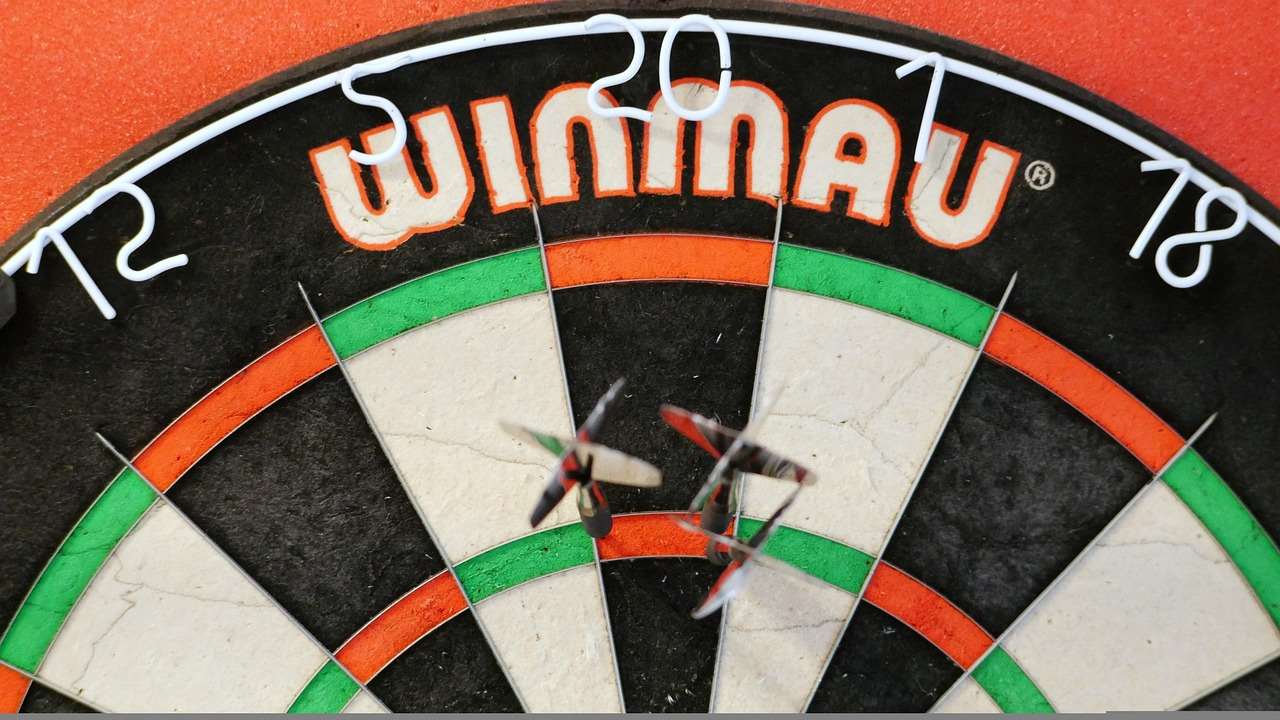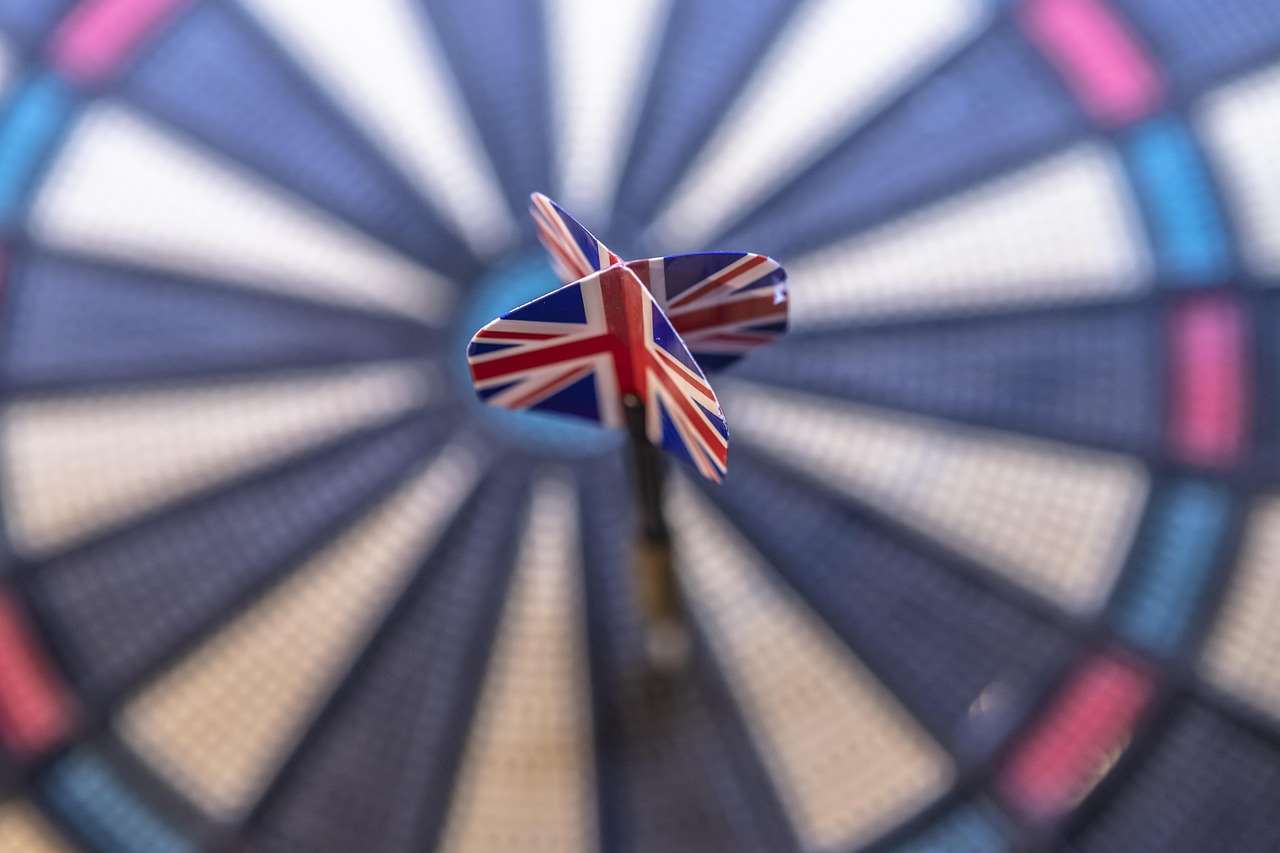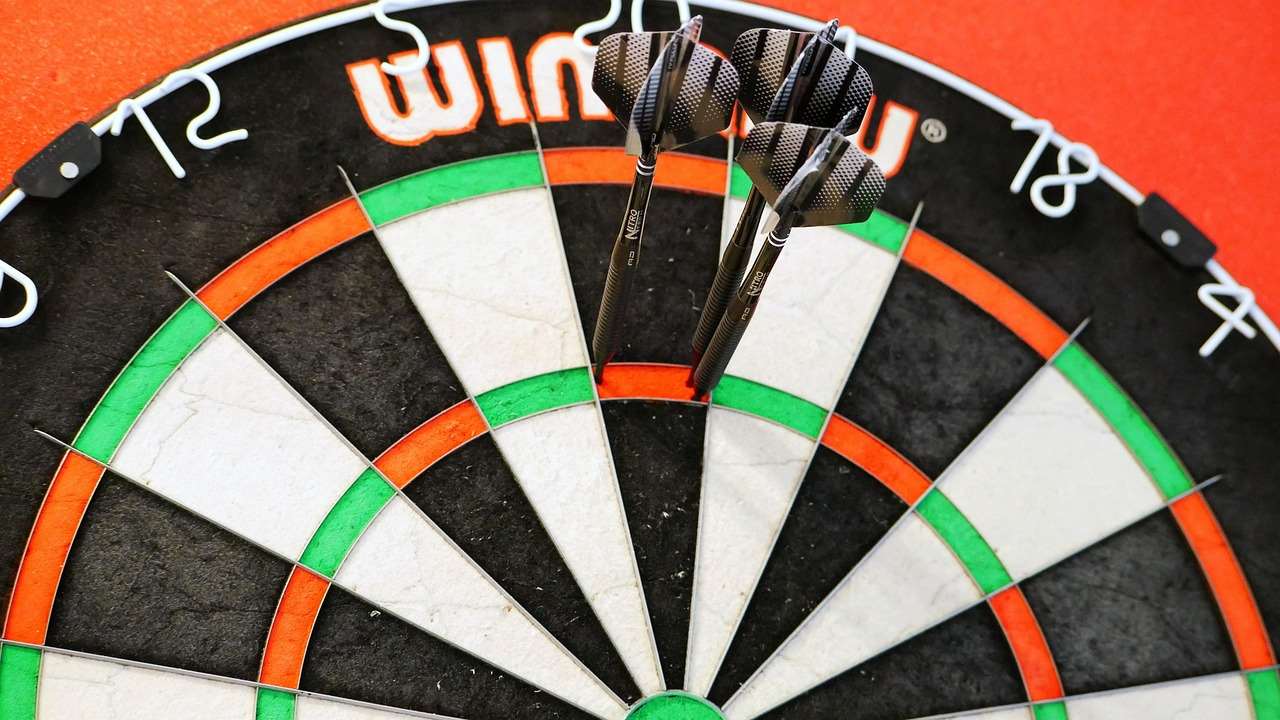The **darts total score** in a game is simply the cumulative sum of all the points a player scores with their throws, crucial for determining the winner. This article comprehensively explores how the **darts total score** is calculated, different scoring systems, and strategies to maximize your score in various darts games.
⚠️ Still Using Pen & Paper (or a Chalkboard)?! ⚠️
Step into the future! The Dart Counter App handles all the scoring, suggests checkouts, and tracks your stats automatically. It's easier than you think!
Try the Smart Dart Counter App FREE!Ready for an upgrade? Click above!
Understanding the Basics of Darts Scoring
The foundation of understanding **darts total score** lies in grasping the basic scoring system. A standard dartboard is divided into numbered sections from 1 to 20, radiating from the center. Each section is further subdivided into single, double, and treble areas. Hitting a section scores the number indicated on that section. The outer ring represents the double area, multiplying the section’s value by two. The inner, thinner ring represents the treble area, multiplying the section’s value by three. The bullseye in the center is worth 50 points, and the outer bull (single bull) is worth 25 points.
Therefore, if you hit the treble 20, you score 60 points. A double 19 is worth 38 points. Successfully understanding how these areas contribute to your darts score to get is vital for strategic play.

How to Calculate Your Score
Calculating your score involves adding up the values of each dart thrown. Typically, players throw three darts per turn. After each turn, the scores from the three darts are totalled, and this **darts total score** is subtracted from their remaining total (usually starting at 501 or 301, depending on the game). Most dartboards have automatic scoreboards to assist players, or a dedicated scorer can perform the calculations.
- Addition: Simply add up the value of each dart that lands in the board.
- Subtraction: Subtract the **darts total score** for that turn from the player’s remaining score.
- Checking Out: In games like 501, the player needs to reach exactly zero, finishing with a double or the bullseye. This adds another layer of complexity to calculating your score.
Different Darts Games and Their Scoring Rules
While the basic scoring system remains consistent, various darts games have unique rules influencing how the **darts total score** is used to determine the winner. Here are a few popular examples:
- 501/301: The most common format. Each player starts with 501 or 301 points and must reduce their score to zero, finishing on a double or bullseye. Strategic calculation of the **darts total score** per turn is essential.
- Cricket: A game where players score points on numbers 15 through 20 and the bullseye, aiming to “close” each number by hitting it three times (singles, doubles, or trebles). The player who closes all numbers first and has the highest **darts total score** wins. This is where a free dart score app (https://dartcounterapp.com/) can be incredibly helpful.
- Around the Clock: Players must hit each number on the board in sequence, starting with 1 and continuing to 20. The first player to hit all numbers wins. While not directly involving a large **darts total score**, accuracy is paramount.
Strategies to Maximize Your Darts Total Score
Improving your **darts total score** involves a combination of accuracy, strategy, and practice. Here are some tips to help you maximize your score:
Aiming for the Highest Scoring Areas
The treble 20 (T20) is the highest scoring area on the board, yielding 60 points. Consistently aiming for and hitting the T20 is crucial for racking up a high **darts total score**. However, don’t neglect the treble 19 (T19) as a backup, especially if you struggle with the T20. A T19 scores 57 points, a respectable alternative.
Consider your strengths. If you find you are consistently landing near a certain number, focus on mastering that number and the trebles around it.
Strategic Checkout Planning
Strategic checkout planning is critical in 501 and 301 games. Knowing which combinations of darts will leave you with a double to finish the game is essential. Practice common checkout routes, such as 170 (T20, T20, Bullseye), 167 (T20, T19, Bullseye), and lower combinations. A well-planned checkout strategy can significantly reduce the number of darts needed to finish, thus improving your overall performance.
Understanding the darts score to get will allow you to prepare for a quick checkout.

Improving Your Accuracy
Consistent practice is the key to improving accuracy. Focus on your throwing technique, stance, and grip. Experiment with different dart weights and flights to find what works best for you. Regular practice sessions, even short ones, can significantly improve your consistency and accuracy.
- Stance: Maintain a consistent and comfortable stance.
- Grip: Use a grip that feels natural and allows for a smooth release.
- Throwing Motion: Develop a fluid and repeatable throwing motion.
Mental Game
Darts is as much a mental game as it is a physical one. Staying calm and focused under pressure is vital. Develop strategies to manage nerves and maintain concentration. Visualizing successful throws can also improve your performance. When the pressure mounts during the when is the darts championship final, the strongest mind often prevails.
Common Scoring Errors and How to Avoid Them
Accurate scoring is essential for fair play. Here are some common scoring errors and how to avoid them:
- Misreading the Board: Double-check the section where your dart landed to ensure you’re scoring correctly. Pay close attention to the double and treble rings.
- Incorrect Addition/Subtraction: Use a calculator or scoreboard to verify your calculations. If you’re using a manual scoreboard, clearly mark each player’s score.
- Busts: In 501/301, avoid “busting” by going below zero or ending on one. Plan your throws carefully to avoid this common mistake.

Advanced Scoring Techniques
Once you’ve mastered the basics, you can explore advanced scoring techniques to further improve your game:
Using Averages to Track Progress
Calculating your three-dart average provides a valuable metric for tracking your progress. Divide your **darts total score** by the number of darts thrown and multiply by three to get your average per three darts. Monitoring your average over time will reveal whether your practice is paying off.
For example, if you score 300 points in 15 darts, your average is (300/15) * 3 = 60.
Strategic Switching
Sometimes, switching to a different target can be advantageous. For example, if you miss the T20 with your first dart, switching to the T19 can be a good option to salvage a decent score. This strategic flexibility can significantly improve your **darts total score** over the long run.
Understanding Outs
Beyond basic checkout combinations, learning more complex “outs” (finishing combinations) can give you a significant edge. Memorizing common outs like 81 (T17, D15) or 96 (T20, D18) can help you finish games more efficiently.
The Impact of Equipment on Your Score
The equipment you use can significantly impact your **darts total score**. Consider the following:
- Dart Weight: Experiment with different dart weights to find what feels most comfortable and controllable.
- Dart Flights: Flights affect the dart’s trajectory and stability. Experiment with different shapes and sizes to find what suits your throwing style.
- Dart Shafts: Shafts connect the flight to the barrel. Different lengths and materials can influence the dart’s balance and feel.
- Dartboard Quality: A high-quality dartboard with thin wiring and consistent density will provide a better playing experience and reduce bounce-outs, ultimately affecting your darts total score.

Training Resources and Tools
Many resources and tools can help you improve your **darts total score**:
- Practice Drills: Utilize practice drills that focus on specific skills, such as hitting doubles, trebles, and bullseyes.
- Darts Score Tracking Apps: Use darts scoring apps to track your scores, averages, and checkout percentages. These apps can provide valuable insights into your performance. Many include automated scoreboards to reduce manual calculations.
- Online Resources: Explore online resources, such as articles, videos, and forums, to learn new techniques and strategies.
- Coaching: Consider seeking guidance from a darts coach to receive personalized instruction and feedback.
Darts Etiquette and Fair Play
While improving your **darts total score** is important, maintaining proper etiquette and fair play is equally crucial. Here are some guidelines:
- Respect Your Opponent: Show respect for your opponent’s skills and efforts.
- Call Your Scores Clearly: Announce your scores clearly and accurately.
- Avoid Distractions: Refrain from distracting your opponent while they are throwing.
- Acknowledge Good Throws: Congratulate your opponent on good throws.
Conclusion
Understanding how to calculate and maximize your **darts total score** is fundamental to becoming a successful darts player. By mastering the basics of scoring, developing strategic checkout planning, improving your accuracy, and maintaining a strong mental game, you can significantly enhance your performance. Remember to utilize training resources, experiment with equipment, and always adhere to proper darts etiquette. Now, put these tips into practice, track your progress, and watch your **darts total score** soar! For more helpful information on the world of darts, including finding the right equipment and the latest tournament news, be sure to check out our related articles!

Hi, I’m Dieter, and I created Dartcounter (Dartcounterapp.com). My motivation wasn’t being a darts expert – quite the opposite! When I first started playing, I loved the game but found keeping accurate scores and tracking stats difficult and distracting.
I figured I couldn’t be the only one struggling with this. So, I decided to build a solution: an easy-to-use application that everyone, no matter their experience level, could use to manage scoring effortlessly.
My goal for Dartcounter was simple: let the app handle the numbers – the scoring, the averages, the stats, even checkout suggestions – so players could focus purely on their throw and enjoying the game. It began as a way to solve my own beginner’s problem, and I’m thrilled it has grown into a helpful tool for the wider darts community.